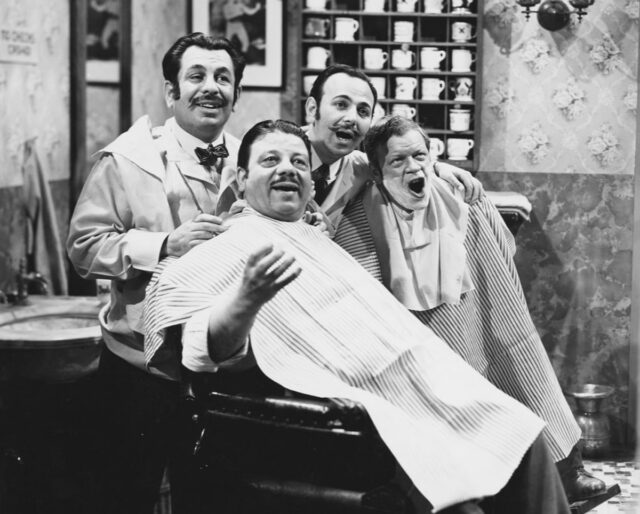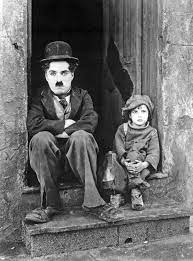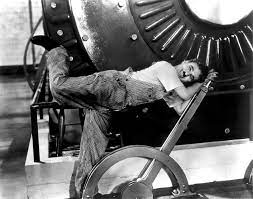
How to Improve Sight-Reading Skills
How to improve sight-reading skills An Introduction to Sight-Reading What exactly is sight-reading? Sight-reading is the ability to look at a sheet music chart and sing it for the first
The history of the song “Smile” is not very well known outside of music circles. First, it was originally written and orchestrated by none other than Charlie Chaplin. Next, the song started as an instrumental for the soundtrack to his film Modern Times. Modern Times was released in 1936. And instead of being entirely a silent movie, it featured sound and was the first time Chaplin’s voice was heard on a film.
Chaplin wrote, directed, produced, and starred in the film. As a result, he also composed all of the music and arranged it with the help of Alfred Newman. Alfred Newman is Randy Newman’s Uncle (yes, that Randy Newman). Chaplin often wrote the music for all of his feature films.
The idea for the film cam from the period of the Great Depression – 1929 through 1939. The Great Depression was a worldwide economic depression that started when the stock market crashed in October of 1929. The resulting fall in stock prices resulted in hard economic times for people in the United States and beyond. People were looking for reasons to continue to press onwards. Messages of hope were essential to keeping people optimistic despite their circumstances.
In 1954, John Turner and Geoffrey Parsons added lyrics to the song based on lines and themes from Chaplin’s silent film. In other words, they gave it the title it retains today – “Smile”.

The film was released in 1936, during the Great Depression. As we previously mentioned, this period of time was characterized by an economic downturn. That downturn resulted in higher prices of consumer goods. Many people couldn’t afford food and had to stand in bread lines and go to soup kitchens.
The Little Tramp struggles in the new modernized industrial world. First he meets a cast of characters that experience hardship and financial woes as he goes. After that, the Tramp finds and conveys inspiration throughout the tale. The context of the film as well as the scene that features the instrumental itself is important.
This is where Turner and Parsons first found the inspiration for the lyrics and song title. In conclusion, the history of the song “Smile” is one where the tramp is trying to get The Gamin to cheer up and smile. A more detailed explanation of how this conclusion is reached can be found below.
This is the part in the film that the original version of “Smile”, the instrumental is playing. Above all, it’s clear from the theme and the intertitles (title cards) that the Little Tramp is telling Paulette Goddard’s character, Ellen Peterson (“The Gamin”) that everything will turn out okay.
None of the title cards say anything about smiling but Paulette Goddard’s character is in good spirits. The idea of domestic bliss seems to be the cause of her smile and laughter. For instance, The Tramp gestures towards the house where the Tramp and The Gamin can be seen in a dream sequence enjoying a meal together.
All of this happens despite the reality of her situation; after all, she’s homeless. Charlie Chaplin’s The Tramp can be seen urging her to be patient. She’ll soon find better days which is the premise of the song “Smile”. The intent of the Tramp’s message being one of finding hope in hardship, even during the Great Depression.
It’s possible that this song remains timeless and popular because it speaks directly to hope. The song tells us to push through our sorrow we can find better times tomorrow. In other words, even when we may be in the midst of depression or life’s trials, keep smiling. Keep trying for better days and as the song says, “you’ll find that life is still worth while”.
The message of hope must resonate because the song “Smile” continues to be sung by artists over modern times. It continues to be included in some form or fashion in movies and shows. Some of these versions are accompanied and others are a cappella. But regardless of accompaniment, the song continues to remain popular.
You can read more about the history of this song in the article, Behind the Song: “Smile” by Charlie Chaplin with Turner & Parsons, and, most likely Raksin. The author, Paul Zullo, interviewed David Raksin in 1999 for a book he wrote, “Hollywood Remembered: An Oral History of Its Golden Age”. In the interview, David Raksin explains much about how the original song was written and orchestrated.
If you’re interested learning who has arranged and performed “Smile”, you can read Who Sang the Song “Smile”. This article talks about the inspiration and relevancy of this particular song and why the Tidelanders continue to perform it.

How to improve sight-reading skills An Introduction to Sight-Reading What exactly is sight-reading? Sight-reading is the ability to look at a sheet music chart and sing it for the first

Generally in most years, the SWD sponsors an annual Chorus and Quartet competition. The exception is the pandemic year we experienced due to Covid-19. There was no competition during the pandemic. The BHS recent resumed chorus competitions in 2022.

The Tidelanders excitedly sponsored our first singing competition. We promoted the contest to over 200 high schools in Harris and Fort Bend counties in Texas. We announced two winners (Men’s and Women’s) mid-April. We are looking forward to planning a bigger contest next year.

The Houston Tidelanders Chorus is pleased that we were able to perform for Clear Lake audiences once again! We’ve been performing in the Clear Lake area for about 25 years and it’s one of favorite shows.

“Smile” continues to be considered timeless. Meaning the message always seems to be relevant. As long as it continues to be popular, artists will continue to cover and interpret it’s meaning in order to continue to have it resonate with audiences. Modern artists like Michael Jackson have arranged and performed it.